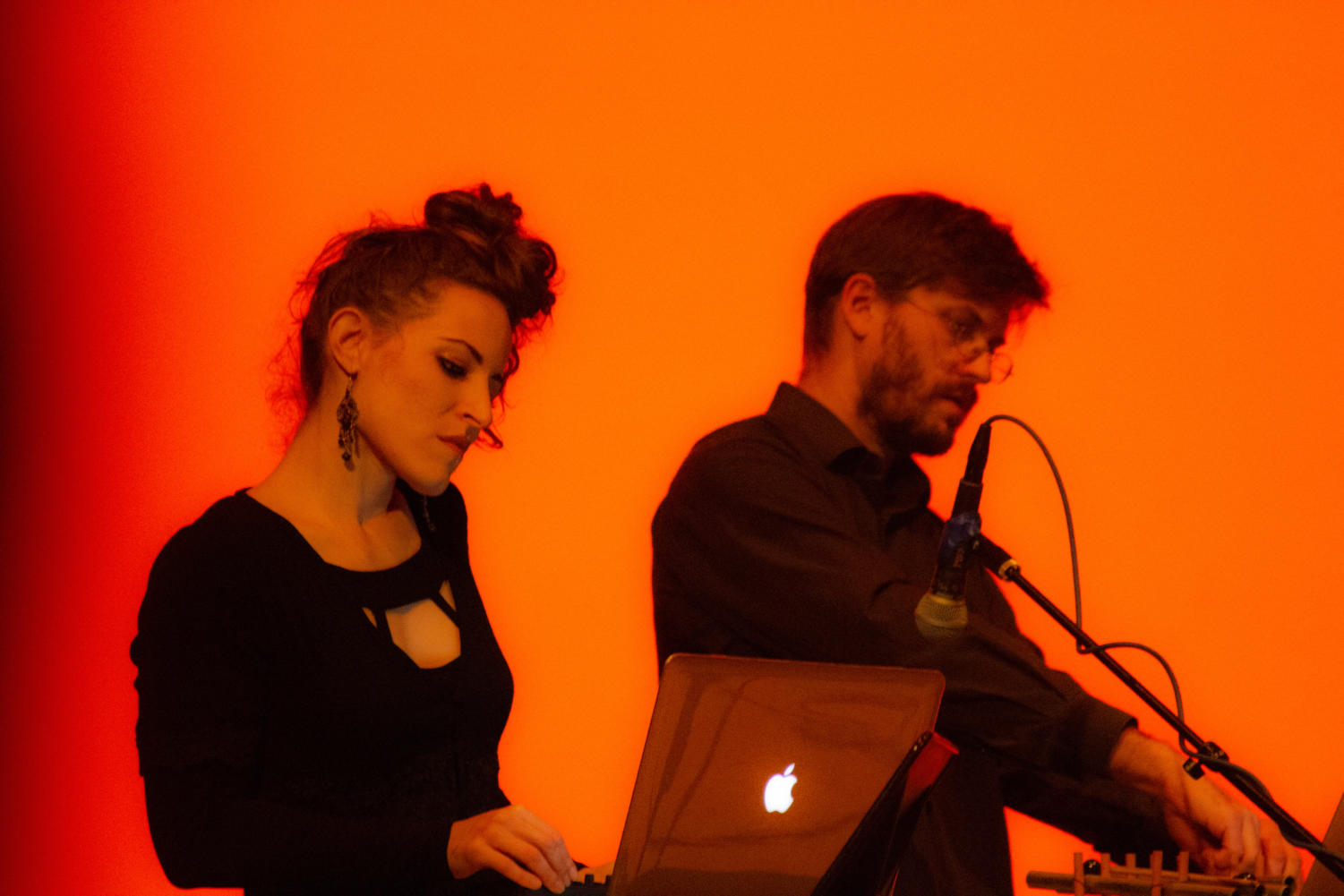Instead of completing homework and assignments on their laptops, the four students of the Laptop Ensemble choose to create music with them. The students self-composed and performed five pieces at the Gerald Daniel Recital Hall Wednesday night using a software, Max to create “patches,” of the composition itself.
“[The ensemble] is experimental sound art,” said Professor Martin Herman, director of the ensemble. “The thought was, ‘Is there a way to play chamber music with laptops?’ We wanted to take [laptops] and make it interactive, making music with it.”
As audience members walked into the room, a soothing buzz akin to vibrations was heard and attendees were immediately immersed.
The song “[resilience],” composed by Cameron Johnston, highlights a sustainable way of living, according to Herman.
The stage was a tangle of cords and wires with only the glow from the Apple symbol on their laptops and their faces lit by the screens. All the laptops were hooked up to a controller where the four students twisted knobs and swayed with the sounds they created.
“Hey Siri, play piano,” someone called out, and the sounds became distorted and chaotic as multiple clips overlapped and wove together.
Cameron Johnston composed a second part to a piece he had composed last year titled, “Hey Siri [iOS 12].” The piece was a remix of funky Siri responses from commands. After taking all those little sound bites, students blended them together to create a unique and chaotic sound as the words “hey Siri” overlapped with “piano” and “hospital.”
The bright magenta background projected on the front and side walls slowly faded as the music came to an end. It replaced itself with an incessant orange color for Sean Jones’ “11,” a song he described as an “electric doom piece.”
According to Jones, it’s called “11” to indicate two parallel planes that represent two forms of human consciousness: one where we are ignoring our impending deaths and the other where we acknowledge the inevitable.
“There is this psyche of death. It’s a human nature to not be at peace with mortality,” Jones said.
The piece started off with low vibrating noises, similar to music during suspenseful moments in horror movies.
Slowly, the sound crescendoed to a static-like noise that mimicked a rushing stream before dropping to a soft melody.
For junior music composition major Stephen Tontz, his favorite tune of the evening was “rainbowrain.” The piece had a projected backdrop with long, rectangle strips that dripped down the screen and changed color.
“I can tell it was emulating the rain and I liked how the composition was set up,” Tontz said. “I liked all the use of the backgrounds. I’ve never seen it done that much before.”
The piece was written by David García Saldaña who also created a homemade chime instrument that he played throughout the piece. He wanted to incorporate live music into the piece, including a person blowing through the mouthpiece of a horn instrument and an electric guitar.
With the colorful background and euphoric, bell-like sound from the chimes, it appeared as though audience members were being surrounded by the color strips raining down around them as the title implied.
“The hope was a song that would go on forever until the group is ready to stop,” Saldaña said. “I wanted to translate actual sound into numbers and then reinterpret them as sounds again.”
As the song played, the strips of rectangle dripped along with the music. Shorter when the sounds were short, and longer when they extended out, falling down and almost touching the stage.
Watch our video coverage of the performance here:
VIDEO | Adam Pacheco & Paula Kiley




